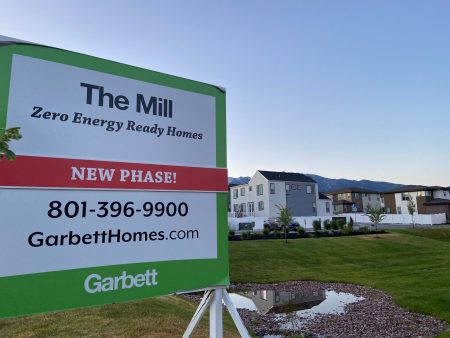Key takeaways
- A purchase agreement is a legally binding contract that spells out the details of a real estate transaction.
- Homebuyers and sellers typically sign a purchase agreement shortly after negotiating the final sale price.
- Most include contingencies that must be met in order for the deal to proceed, such as the need for loan approval and a home inspection.
You’ve been searching for several months, and you’ve finally found a home you love in a great neighborhood. After negotiating with the seller, you settle on a price. You sign an agreement, put down a deposit and, eventually, find yourself at the closing table concluding the transaction — or executing the purchase agreement, as they say in real estate lingo.
But what exactly does a purchase agreement entail? Is it the same as a contract? Here’s everything you need to know about these documents, what they include and the timeline for creating one.
Purchase agreement definition
In real estate, the purchase agreement is the agreement between the homebuyer and the home seller that spells out the terms of the transaction. As its name suggests, it’s a contract to purchase a property — you may also hear it referred to as a purchase contract, real estate sales contract or real estate purchase contract.
In addition to basic information like the property address and price, the document typically outlines any contingencies that must occur before the sale can be completed, along with a specific timeframe in which they must be met. For instance, if the sale is contingent on a satisfactory home inspection, that would be outlined in detail.
The purchase agreement or contract is generally signed at the closing. But a similar-sounding document, a purchase and sale agreement (PSA), may come before that. “Typically, purchase and sale agreements are drafted earlier in the process,” says Christine Finch Oleynick, a Connecticut-based Realtor with Keller Williams Luxury Realty. “The buyer, seller or both must meet certain contingencies before a contract is drawn up, and a transaction is finalized.” That being said, ”purchase agreement” is sometimes used interchangeably with “PSA.”
What does a purchase agreement include?
The information outlined in a purchase agreement can vary by state, but it usually includes:
|
Buyer and seller names |
The legal names of all parties involved in the transaction, who have held or will hold title to the home. |
|
Property information |
The property address, square footage and land plot information. |
|
Price and financing information |
The home’s final purchase price and the amount of the mortgage, if any, the buyer has taken out for the purchase. |
|
Possession date |
The date the buyer will officially take control of the property. |
|
Closing date |
The date the transaction is finalized. |
|
Inclusions/exclusions |
Any fixtures that the seller plans to leave behind, such as a washer/dryer or oven, as well as any major items they may be taking with them. |
|
Earnest money deposits |
A good-faith deposit made by the buyer, typically held in an escrow account and then put toward the purchase price. |
|
Closing costs |
Any closing expenses that will be incurred, as well as who will pay them. |
|
Contingencies |
The contingencies that need to be met, usually by a pre-determined date, before a transaction may be finalized. Common contingencies include home inspection, appraisal and financing. |
What’s not included?
While the purchase agreement provides a fairly comprehensive summary of a real estate transaction, you probably won’t see a specific breakdown of fees in this document.
For instance, if you want to see exactly what’s included in your closing costs, you’d probably need to look at the settlement statement or closing statement, which you typically receive a few days before the closing.
Is a purchase agreement legally binding?
Yes — when the document has been signed by both parties, it becomes a legally binding contract.
“After the buyer and seller sign that purchase contract, it’s a binding agreement,” Oleynick says. “However, it’s important to ask your Realtor or closing agent about the specific process in your state, as it can vary depending on where you live.”
If a seller or buyer fails to meet a contingency within the time frame outlined, it’s possible to back out of the purchase. However, backing out of a deal without a reason that’s clearly defined in the contract can be difficult, and costly. Purchasers feeling buyer’s remorse will likely forfeit any earnest money deposits to the sellers, and second-guessing sellers could face legal action from the buyers.
More than 14 percent of pending home sales fell through at the start of 2025, according to Redfin. That’s the highest cancellation rate since at least 2017 — and a good reminder of how important the specifics of your purchase agreement can be.
Typical purchase agreement timeline
While the process and time needed to purchase a home can vary widely, here’s a rundown of the milestones you can expect, in chronological order:
- The buyer’s real estate agent drafts and submits an offer letter.
- The seller’s agent shares the offer with the seller. Typically, sellers will either accept, reject or counter-offer within one day.
- Price negotiations between buyer and seller can take a few days.
- If negotiations are successful, a purchase and sale agreement is drafted. Both parties generally have 10 to 14 days to sign it after an offer is accepted.
- Once it’s signed, the home is “under contract” or “in contract.” At this point, the buyer typically has around 30–45 days to secure financing; the seller has that amount of time to vacate the home.
- If there are contingencies, both the buyer and seller will need to have met them within the timeframe specified. For example, buyers might have a week to 10 days to schedule a home inspection.
- Around three business days prior to closing, both the buyer and seller will receive a copy of the finalized purchase contract, along with a closing statement or settlement statement — a sort of balance sheet of costs — from the closing agent.
- On closing day, the purchase contract is signed by both parties, the funds and keys are turned over and the home sale is complete.
Why we ask for feedback
Your feedback helps us improve our content and services. It takes less than a minute to
complete.
Your responses are anonymous and will only be used for improving our website.
Help us improve our content
Read the full article here












